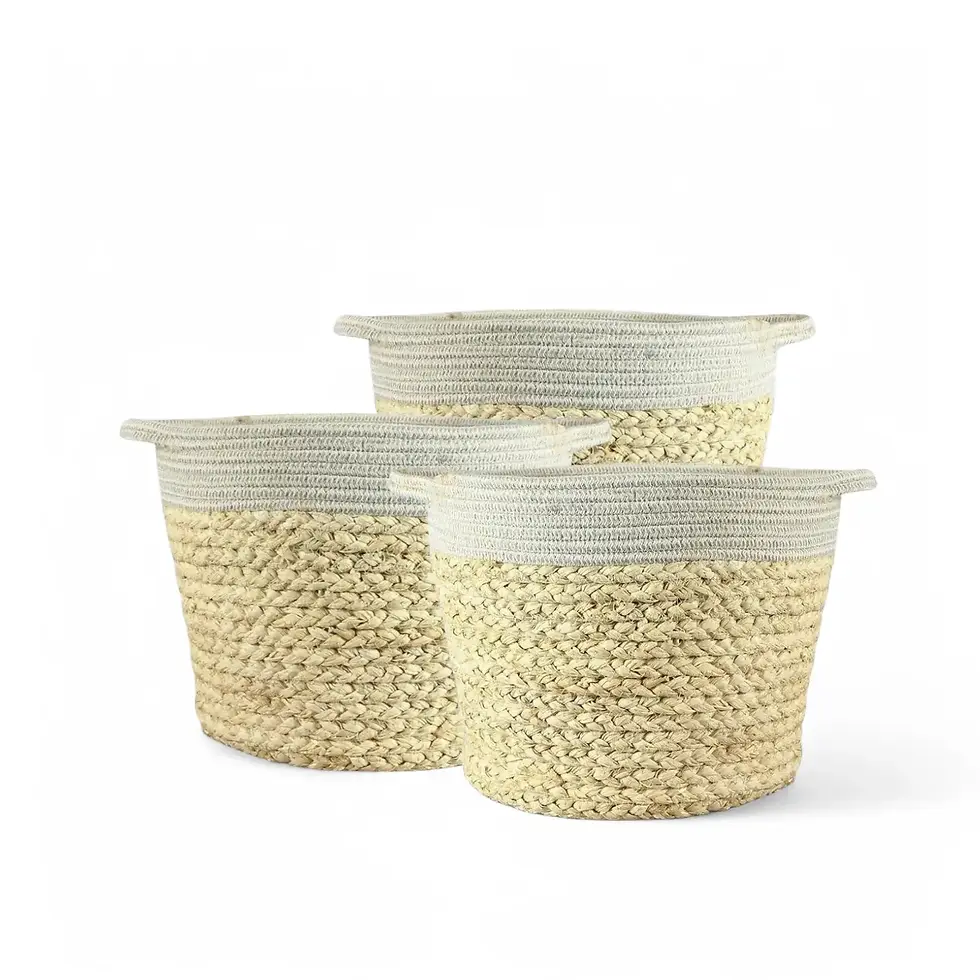Rhipsalis pacheco-leonis subsp. catenulata - Growth and Care Guide
With its delicate, cascading stems and finely segmented structure, Rhipsalis pacheco-leonis subsp. catenulata brings a touch of the tropics into your home. This epiphytic cactus thrives in shaded environments, making it perfect for spaces with filtered light. Unlike desert cacti, it prefers consistent moisture and high humidity, developing long, interwoven green stems that drape beautifully from hanging baskets. Its trailing nature and soft, flexible growth make it a favorite for plant lovers seeking an elegant, easy-care houseplant.
Differences Between Rhipsalis pacheco-leonis subsp. catenulata and Rhipsalis paradoxa
While both species belong to the Rhipsalis genus and share a segmented, trailing growth habit, they differ significantly in structure. Rhipsalis paradoxa is known for its bold, geometric zigzagging stems, creating a more structured and angular look. In contrast, Rhipsalis pacheco-leonis subsp. catenulata features softer, more rounded segments, giving it a finer, more delicate appearance. Additionally, R. paradoxa has a more robust and rigid growth pattern, whereas R. pacheco-leonis subsp. catenulata forms flexible, cascading chains that intertwine naturally, making it ideal for hanging planters.
Key Features and Benefits of Rhipsalis pacheco-leonis subsp. catenulata:
- Cascading, segmented stems - Creates a striking, draping effect.
- Adaptable and low-maintenance - Thrives with minimal care.
- Non-spiny cactus - Safe to handle, unlike traditional cacti.
- Pet-friendly - Non-toxic to cats and dogs.
- Thrives in indirect light - A great option for spaces with limited natural sunlight.
Natural Habitat and Growth Behavior
Originating from the humid tropical forests of Brazil, Rhipsalis pacheco-leonis subsp. catenulata naturally grows as an epiphyte, attaching itself to tree trunks and absorbing moisture from the air. Its native environment maintains temperatures between 18°C and 27°C with high humidity. Indoors, it remains compact, reaching up to 50 cm in length, with moderate to fast growth. This trailing and hanging species benefits from being placed in elevated positions where its stems can fully develop.
How to Care for Rhipsalis pacheco-leonis subsp. catenulata
- Placement: Prefers bright, indirect light but adapts to lower light conditions.
- Light: Thrives in filtered or dappled light; avoid direct sun to prevent scorching.
- Watering: Keep soil consistently moist but not waterlogged. Allow the top layer to dry slightly before rewatering.
- Humidity: High humidity is preferred. Suitable for bathrooms or kitchens but adapts to drier air with consistent watering.
- Temperature: Ideal between 18°C and 27°C; avoid exposure to cold drafts.
- Soil: A well-draining mix containing orchid bark, coconut coir, and perlite works best.
- Repotting and Pot Choice: Repot every 2-3 years to refresh soil. Use a shallow pot to support its epiphytic root system.
- Fertilizing: Feed monthly with a diluted, balanced liquid fertilizer during active growth.
- Propagation: Easily propagated from stem cuttings. Allow cut ends to dry slightly before planting.
- Semi- and Hydroponics: Adapts well to semi-hydroponic conditions, thriving in LECA or hydroponic setups with proper nutrients.
- Pruning: Trim leggy or overgrown stems to maintain a compact shape.
Common Issues and Solutions
- Wrinkled or shriveled stems: Caused by underwatering—maintain steady moisture levels.
- Yellowing segments: Often due to overwatering—allow soil to partially dry before watering.
- Brown, dry tips: Indicates low humidity—place near a humidifier or group with other plants.
- Pests (mealybugs, spider mites, whiteflies, fungus gnats): Treat with neem oil or insecticidal soap.
- Soft, blackened stems: A sign of root rot from excessive moisture—trim affected areas and repot in fresh, well-draining soil.
- Fungal Issues: Can occur in overly damp conditions—ensure good air circulation and avoid wetting stems.
- Leggy Growth: Insufficient light can cause weak, elongated stems—move to a brighter spot with indirect sunlight.
- Leaf Drop: Often due to inconsistent watering or sudden temperature changes—keep conditions stable.
Additional Care Tips
For best results, grow Rhipsalis pacheco-leonis subsp. catenulata in a hanging planter to allow its natural trailing growth to develop fully. Unlike desert cacti, this species appreciates regular watering and does not tolerate extended dryness. Mimicking its native habitat with consistent humidity and filtered light ensures it remains vibrant and healthy.
Etymology
The genus name Rhipsalis comes from the Greek word rhips, meaning "wickerwork," reflecting its interwoven stem structure. The species pacheco-leonis was originally described as Rhipsalis paradoxa var. catenulata by Kimnach before being reclassified by Barthlott and N.P. Taylor in 1995. The Latin word catenulata means “small chain,” referencing its distinct, segmented stem pattern.
Frequently Asked Questions about Rhipsalis pacheco-leonis subsp. catenulata
- Can Rhipsalis pacheco-leonis subsp. catenulata grow in low light?Yes, while it thrives in bright, indirect light, it can tolerate lower light conditions, though growth may slow.
- Is this plant safe for pets?Yes, Rhipsalis pacheco-leonis subsp. catenulata is non-toxic to cats and dogs, making it an excellent pet-friendly houseplant.
- How often should I repot my Rhipsalis?Repot every 2-3 years or when the plant outgrows its container. Use a well-draining soil mix for epiphytic cacti.
Order Now!
Bring home Rhipsalis pacheco-leonis subsp. catenulata today and enjoy its easy-care, trailing beauty. Order yours now!
Rhipsalis pacheco-leonis ssp. catenulata
Rhipsalis pacheco–leonis subsp. catenulata plants come in following sizes:
L – is approximately 80 cm long, ø 20cm hanging pot.

























































